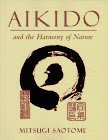It is generally understood that first things are always memorable. You remember your first day at school, your first kiss and most certainly your first aikido training! There are, obviously, exceptions but if you loved it (or it was a complete shock :)), you will probably remember. This post is about my first training experience. If you too have your story please share it in the comments.
It was back in 1999 in my 2nd year at the (then) University of Veszprem. Each semester, we needed to collect 20 signatures from some sort of sport activities, and I was really bored with the excuse-sports the year before (airgun practice), so wanted to do something 'extreme' along with some friends. At that time a martial art seemed extreme enough, so I picked one at random. Alright, this is not true :). It wasn't random. I already heard about karate and kungfu but nothing about aikido, so it was an obvious choice :).
Having no martial art experience, the first training was...very funny. You had to sit down in the beginning in a line with others, and had to be in total silence for at least a minute. Then there were these jumps and breathing exercises, still in silence.
If you are in an unusual situation you often give a strange smile or play around with your fingers, ears, pen, etc., and since my body movements were controlled, smile remained :) Actually, I was really about to burst into laughing, and so were the other newcomers (roughly 15 of us). There was one time when I even needed to pretend coughing to hide a sudden laugh. I felt exposed in front of all those people and I was so lame. At the end though, I was tired and didn't feel like this anymore*. During that week of my first trainings, I already decided that aikido would be a long-term "exercise" for me.
By the way, the training was about tenchinage (as I learned its name later on).
Please share your experience with me (and other readers) even if you martial art is not aikido. That would make the story-set really interesting.
*this is not true either :D. There are still days when it's hard to control myself in the beginning of the meditation before class. The difference is that now it's now because I'm in an unusual situation but because I want to train so much and my body would jump and do those tenchinage (and many more) techniques. Be warned: the squeaking sound of a swinging punch bag can be very dangerous :D!
Thursday, 27 September 2007
The first training
Posted by
Zolley
on
Thursday, September 27, 2007
2
comments
![]()
Labels: aikido, experience, first, martial arts, stories, training
Wednesday, 26 September 2007
Beginners' guide - how to tie your belt
Another post for new people in aikido: beginners of our dojo sometimes have some martial arts experience, these people often come to do aikido because they had an injury before and don't want to risk their health again. Indeed, injuries are not so frequent in aikido, although you still need to be careful to avoid injuring others or hurting yourself. To get back to the point, these people usually know how to tie a belt, there is only one difference, as I can see, between how we do it and how others do it: when finishing the 'knot', we tuck the end of the belt (also called obi) in between the gi and the belt itself.
One problem beginners find at first is "the knot is not as flat and nice-looking as yours advanced students". There might be two reasons for this: 1) you really didn't do it properly, or 2) you just need to give it some time until it almost automatically goes into place.
I'm addressing the first option here so you can be calm and patient, and focus on the second point and, obviously, the training (hopefully instead of your belt).
The following video shows how to tie your belt.
You may notice that this belt is quite hard while yours might be softer. You should still apply the same steps though if your belt is softer, it shouldn't make any difference at all.
There is another version of putting the belt on, I'm using that. I find the middle of the belt, put it where the knot will be, cross the belt at my back and tie the knot in front exactly the same way as shown in the video. Some say this version is not ideal as the crossed belt might hurt your back during the (incorrect) execution of some techniques. I haven't experienced any problems with the crossed version but I might change the way of tying my belt when I need to change my belt to a black one :).
Posted by
Zolley
on
Wednesday, September 26, 2007
0
comments
![]()
Labels: beginners guide, belt, obi, video
Sunday, 23 September 2007
Size and fabric - how to buy a keikogi
I guess many people have already experienced the problem of buying gi (uniform) or hakama of an appropriate size. I have a recent experience in hakama measuring, choosing and ordering, so I thought it would be useful to put a couple of paragraphs together about sizes. You can read about the keikogi sizes and fabrics in this post, the "hakama buying guide" will follow some time later.
The first thing I experienced when I was a really beginner was the sizing of the keikogi. For me it was surprising that you have to give them your height and they will give you a good sized gi. I rarely experienced anything like this before because my not-so-robust body always made it hard to find anything good (i.e., tight enough) in my size. I was skeptical, but it turned out, that since the gi trousers are loose anyway, my skinny nature was not a problem at all. One of the first very good points and positive experiences from the time I started doing Aikido...
But it wasn't so easy just to give my height to get a good gi. I was 177cm, but the gis are sized 170 and 180. 180 is closer but does it work like that? No, it didn't. I was suggested to buy a 170 one, but only because the fabric of this particular keikogi didn't shrink much when washed.
So here are a couple of points to consider when buying a gi (I think it's worth reading even if are lucky enough to try them on and inspect them before buying):
- If you are between two sizes, e.g., your height is 175cm (sorry, I can't count in inches but as far as I know we can convert the sizes so that 4' is roughly 10cm), always choose the smaller one. It may still shrink but in aikido it's not a problem if the sleeve of the jacket is shorter (it's easier to grab and hold your arms when doing a technique).
- Karate gis might be OK for a while but you will see that they are not so durable because the jacket is not created for constant pulling and throwing (katadori, munedori techniques). If you don't have access to aikido gi specifically, a judogi is a good solution as those jackets are thicker and are built for durability. Also, a judo and aikido gis' trouses are reinforced at the knees (for suwari waze techinques). Both of my gis so far have been judogis, I just need to tuck up the sleeves twice, it's absolutely fine like that.
- I almost forgot: the gi should be white with no fancy 'Aikido Dragon' big emblems anywhere :). This might be different for other aikido clubs, but the only non-white things allowed in our organisation are: the logo of the Hungarian Aikido Foundation (our mother-organisation), the three ai-ki-do kanji and your name. You should also note that 'aikido' (usually written on advanced students' gis, e.g., from 1st dan) and/or your name is generally written there during seminars by a very experienced aikido master (in our case, Fujita Masatake shihan who always goes around with a black marker asking for your name :)). These signs also prove and show that you have attended a seminar of a master. And, obviously, you can ask your mom to embroider these signs on your gi :) to prevent fading.
Posted by
Zolley
on
Sunday, September 23, 2007
1 comments
![]()
Friday, 14 September 2007
Let's do Aikido
I will discuss anything that is related to Aikido, sometimes specifically related to our club in Wimbledon, hopefully get some others to write as well.
For now, let's start with a link to the page of our club for those wanting to feel and do it instead of reading only:
http://www.holistic-fitness.net/classes/aikido/
Articles, photos, stories and news coming shortly.
Zolley
ps. You may have noticed that my English is not perfect but I'm willing to learn so any messages about the language are very much appreciated (you can contact me through my profile).
Posted by
Zolley
on
Friday, September 14, 2007
0
comments
![]()
Labels: aikido, aikido club, aikikai, london, martial arts, wimbledon









